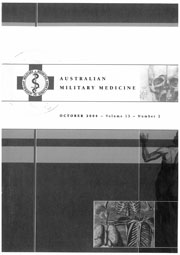RESPONSE White Powder Incidents: Did we manage and could we manage again?
ABSTRACT The use of biological weapons has been around since before the siege of Kaffa in 1346 when the Tartars catapulted plague-infected bodies over the ramparts. The potential for terrorists to use biological agents against a civilian population has been well understood by security agencies for some time. However, until the tragic use of anthrax… Read more »







